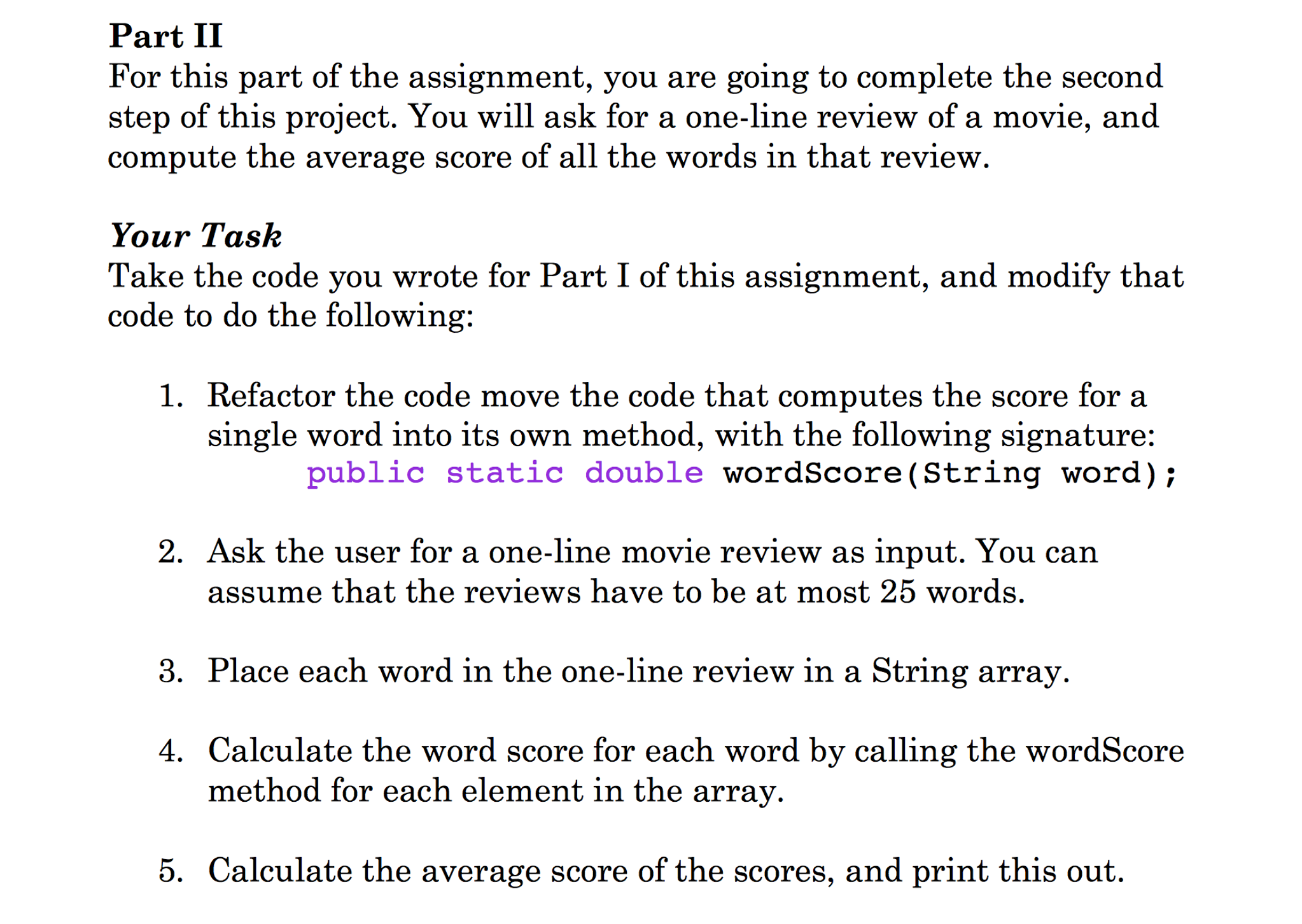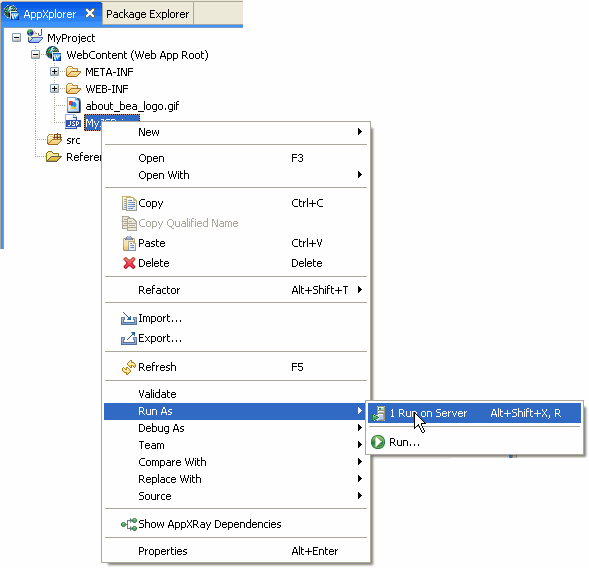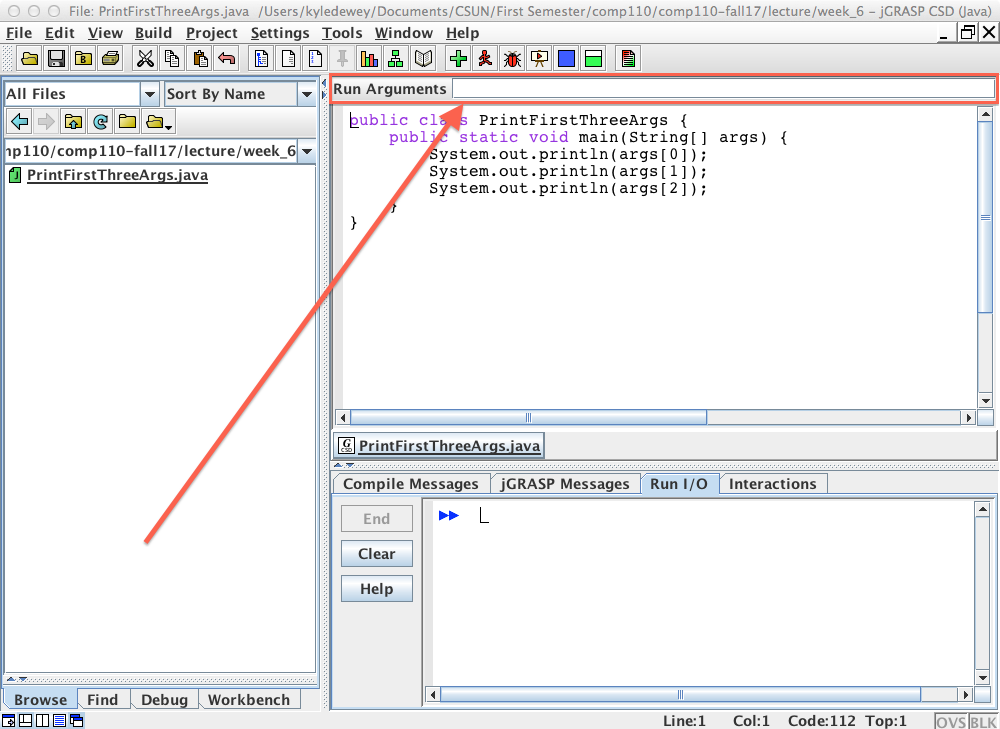
From left to right, their behavior is the following: These buttons control the execution of the debugger. Notice that near the top-left corner of jGRASP, there is a new set of buttons. The next line to execute will be highlighted. The program will run until it hits the line of your breakpoint. Once you have set the breakpoint, compile your program (if you haven't already) and then press the ladybug icon to run it in debugging mode. (One good place to set a breakpoint is on the first line inside your main method, so that you can step through the entire program's execution.) To set a breakpoint, move your mouse cursor to the left margin of your file's editor window until the cursor becomes a stop sign, and press the left mouse button. To use it, first you must tell jGRASP where to pause the execution this is called a breakpoint. From there, you can run each line one at a time and see the results. The debugger lets you run your program partially and then stop it.

#Java jgrasp tutorial code
You can see the output of your code in the window at the bottom, in the same location you looked for compiler errors in the previous step.JGRASP debugger tutorial video by the jGRASP authors You can run your code by selecting Build -> Run, as illustrated in the image below. If your code compiled successfully in the previous step, then you'll be able to run it. The image below also shows that HelloWorld.class has appeared in the same folder/directory as HelloWorld.java. In the case of the image below, there were no errors it shows that javac was run and subsequently exited normally.īecause javac was successful, a class file was produced, namely HelloWorld.class. If compilation doesn't succeed, error messages will be shown in the window at the bottom, illustrated in the image below. Note that compilation won't necessarily succeed.įor example, the compiler will reject your code if it has a syntax error, which includes things like forgetting to match a left brace ( ). You can tell jGrasp to compile your code by selecting Build -> Compile, as shown in the image below.

Internally, jGrasp performs this by running javac, though it hides this detail from you. Once your code is written, you can try to compile it. Once you have selected a place to save the file along with the filename, hit the Save button.

While you can save your code with a different filename, you won't actually be able to compile and run your code later.Īssuming your code contains a class definition (e.g., public class Foo), jGrasp will automatically choose a correct filename (in this case, Foo.java). In Java, the filename must always match the name of the class you have created in the file.įor example, if the class name is Foo, then the code must be saved in a file named Foo.java. Selecting Save will allow you to choose exactly where you want to save the file, along with what the filename should be. You can save the file by selecting File -> Save from the menu, as shown in the image below. You will need to save the file explicitly before you can actually compile or run your code. While you have been working with a file in jGrasp, it has not yet been saved to the computer. When you ask jGrasp to create a new file, an embedded window will appear wherein you can write and edit your code. You can create a new Java source file by selecting File -> New -> Java. JGrasp can be downloaded here (look for the “Download” link on the top left you can skip the survey and scroll straight to the bottom).Įxactly how you do this depends on your particular configuration. This guide assumes that you already have jGrasp installed, which is preinstalled on the lab machines. Compiling and Running Java Code with jGrasp Compiling and Running Java Code with jGrasp


 0 kommentar(er)
0 kommentar(er)
